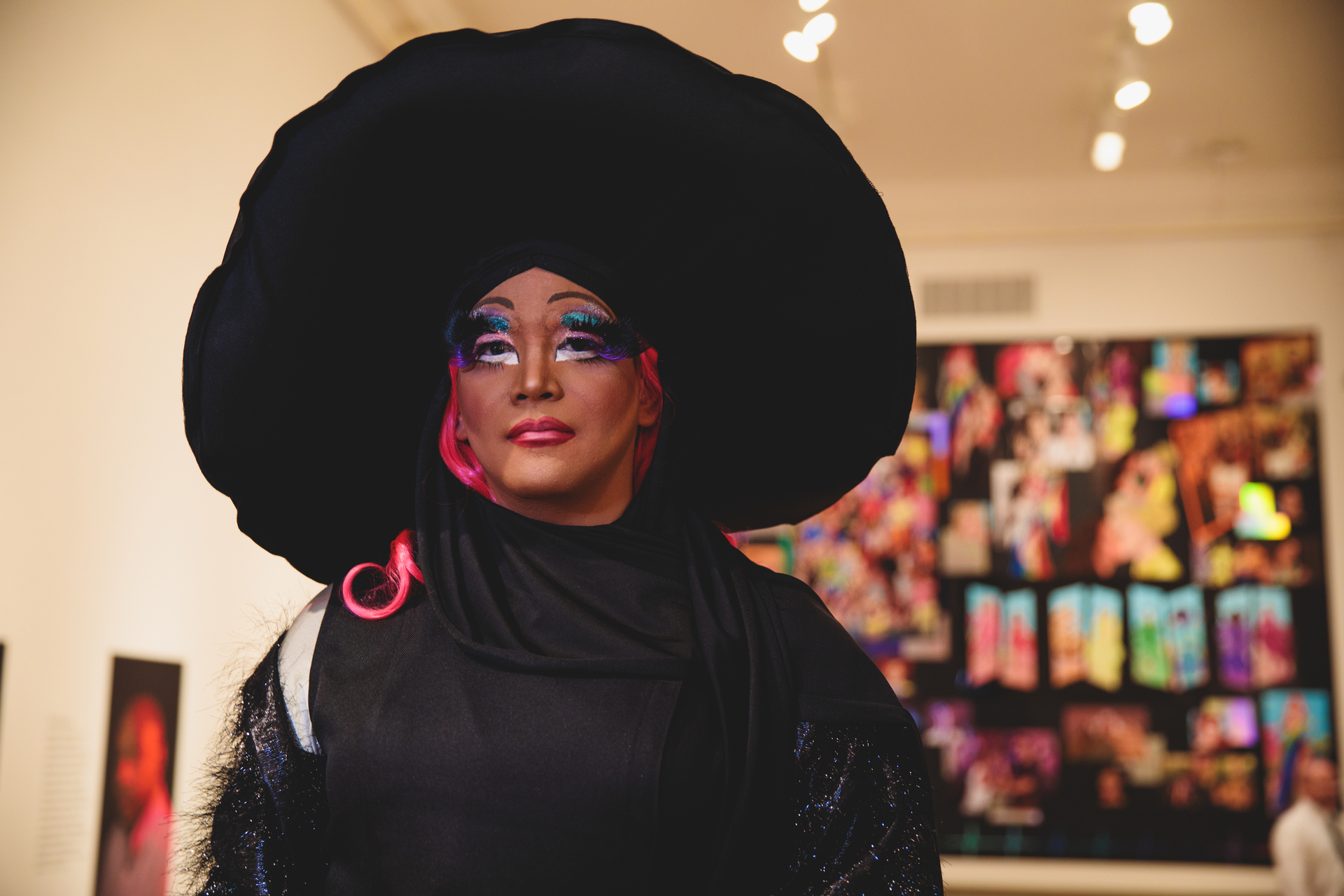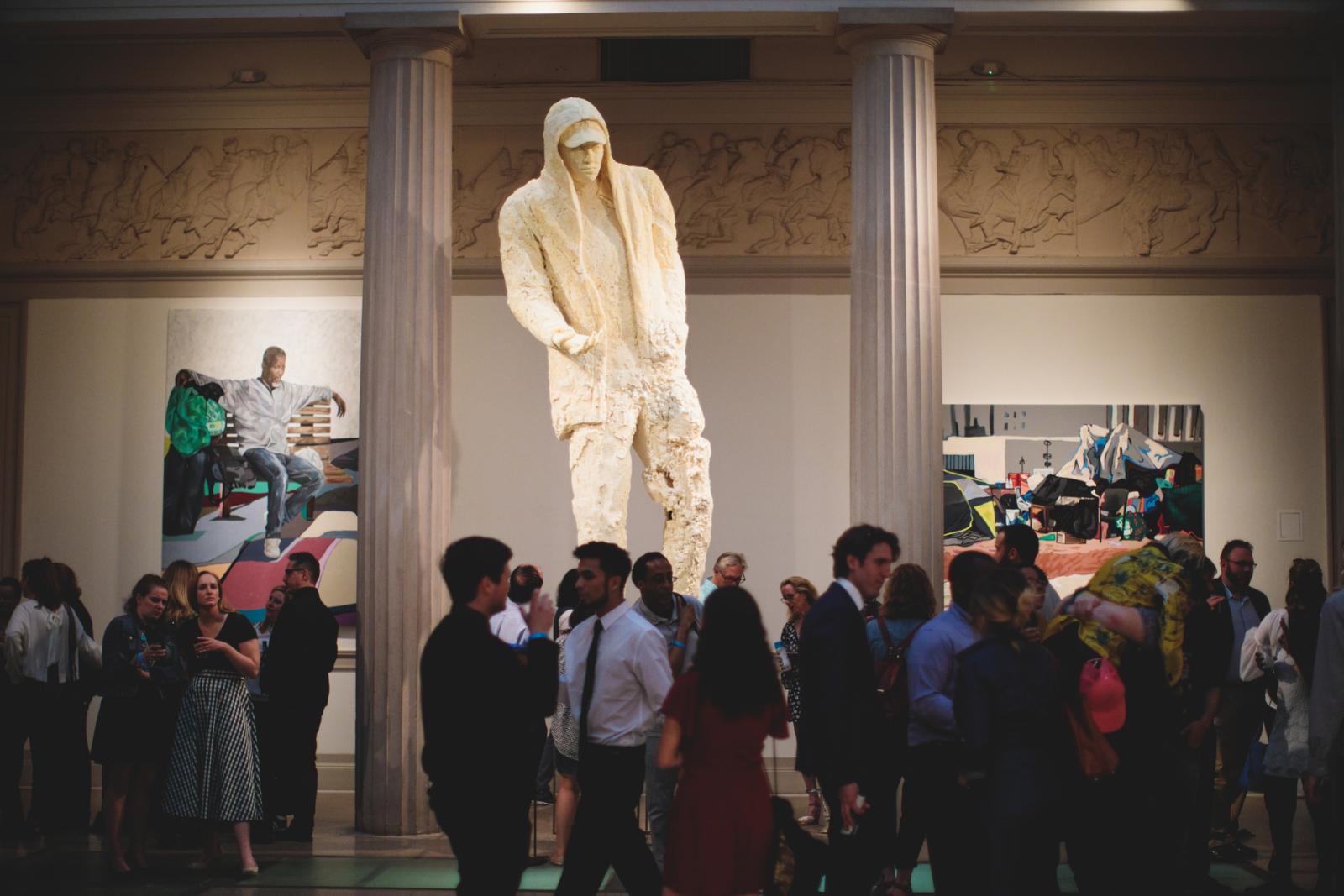By Ruth Steinhardt
Tyree Brown’s tiny portraits are intensely detailed, highly individual, as sharp and high-contrast as woodcuts. Up close they are almost pointillist, the figures composed of short, precise lines of graphite. And their arresting detail requires perseverance to create. Each one takes Ms. Brown about a month—although, she says with a laugh, “if I really focus, don’t watch TV, cut out social media, I can do one in two weeks.”
Ms. Brown, now a senior at the George Washington University’s Corcoran School of the Arts and Design, had to retrain herself to draw with her non-dominant left hand after a 2015 accident left her in a wheelchair without the use of her right. Through the often-frustrating process of recovery, she got comfort from her strong religious faith and from her sketchpad, which a high school friend brought her in the hospital.
“Drawing was all I wanted to do,” Ms. Brown said. “And it taught me patience.”
Ms. Brown’s compelling work is among those featured in “NEXT 2018,” the Corcoran’s annual thesis exhibition, which opened Thursday night. In the crowded Flagg Building, students and their families admired work by 52 senior undergraduate students and 29 graduate students in digital media design, fine art, graphic design, photography, theater, dance, photojournalism, art education, exhibition design and new media photojournalism.
In a toast for NEXT students, George Washington President Thomas LeBlanc called the exhibition an “impressive display.”
“We’re extremely proud of you and fortunate to count you among our GW community and to have played a small role in your artistic development,” Dr. LeBlanc told students. “I know many of you overcame challenges in creating your work—including contending with our construction—but we hope the work we have done in this historic building, and the legacy you are leaving, will serve our future students and this school very well.”
Corcoran Director Sanjit Sethi said the school’s goal is “to educate the next generation of cultural leaders.”
“And the future is in how they choose to manifest that—whether it’s getting gallery representation and showing at Art Basel Miami, or starting their own design firm, or running a nonprofit or whatever else,” he said.
The projects on display are ambitious. Master’s degree candidate Maria Luz Bravo visited 52 buildings and interviewed hundreds of Washington, D.C., residents for her DC Quadrants Project, which examines identical addresses in the District’s Northwest, Northeast, Southwest and Southeast neighborhoods. It is a striking exploration of the city’s contrasts, alive with the voices of old and new residents affected by its development.
“My work has always revolved around the city and the social issues that we can see in an urban landscape,” said Ms. Bravo, a professional photographer from Mexico City. “It’s always been about people, but the city is the fabric.”
Quincy Mata’s work was on both visual and performative display. His thesis, “Home,” is a digital graphic novel chronicling the lives of a group of superheroes from the LGBTQ community, centered around a drag fashion show at a gay club and inspired by the Orlando Pulse nightclub shooting.
Art from the comic filled the wall of one gallery, but that wasn’t Mr. Mata’s only NEXT contribution. Pink-wigged and heavily lashed, clad in a showstopping rainbow gown, Mr. Mata took to the Flagg Building’s marble steps and—flanked by two backup dancers—danced to Sia’s “The Greatest” before a cheering crowd.
“I always read comic books, but I was always looking for something that I could identify with—as a kid, not even knowing what I was looking for,” Mr. Mata said. “So for me, now that I’m older, I want other kids to have that same experience. So if I can create gay superheroes, maybe there’s something that they can look up to and aspire to.”
















